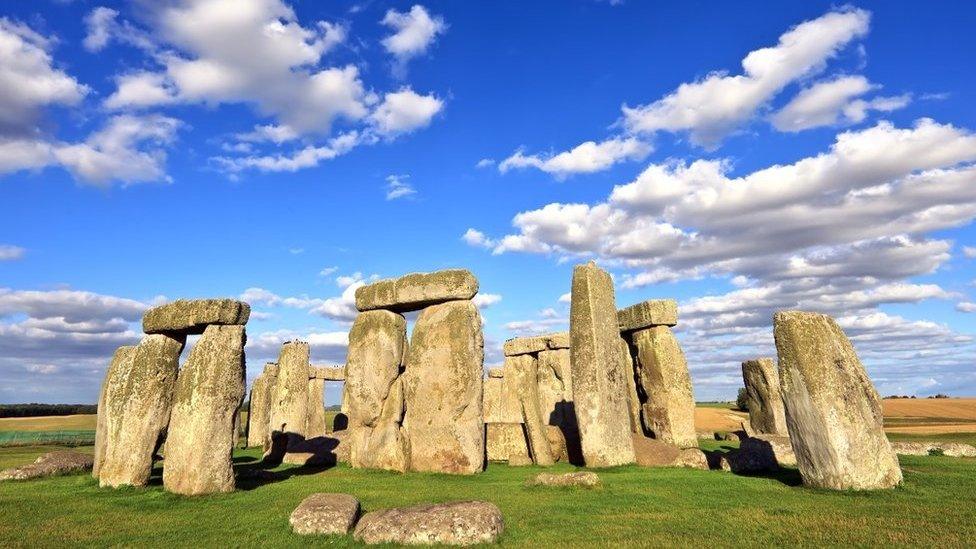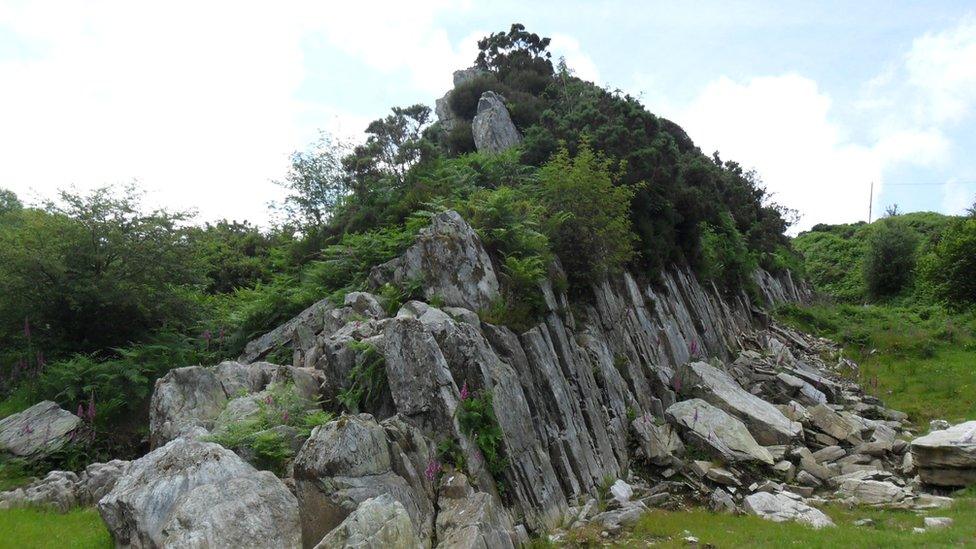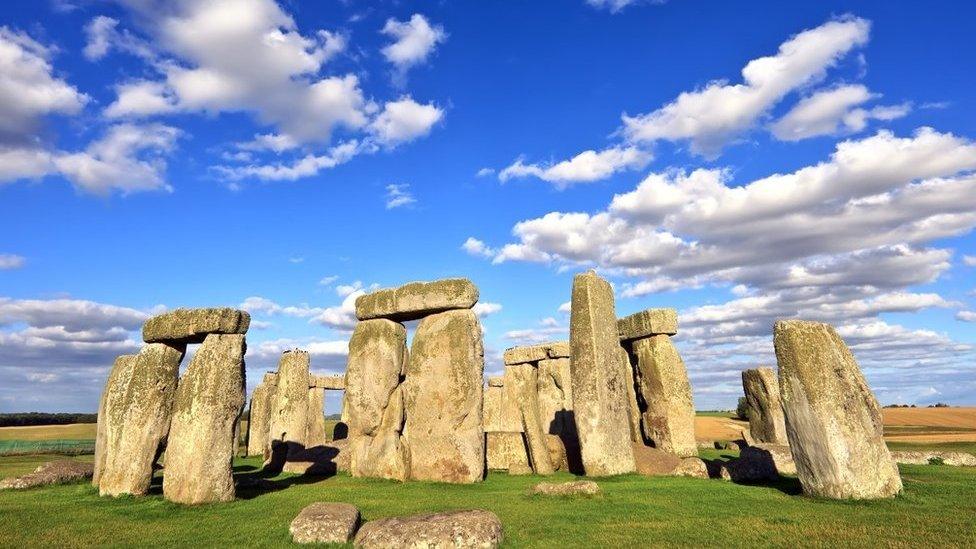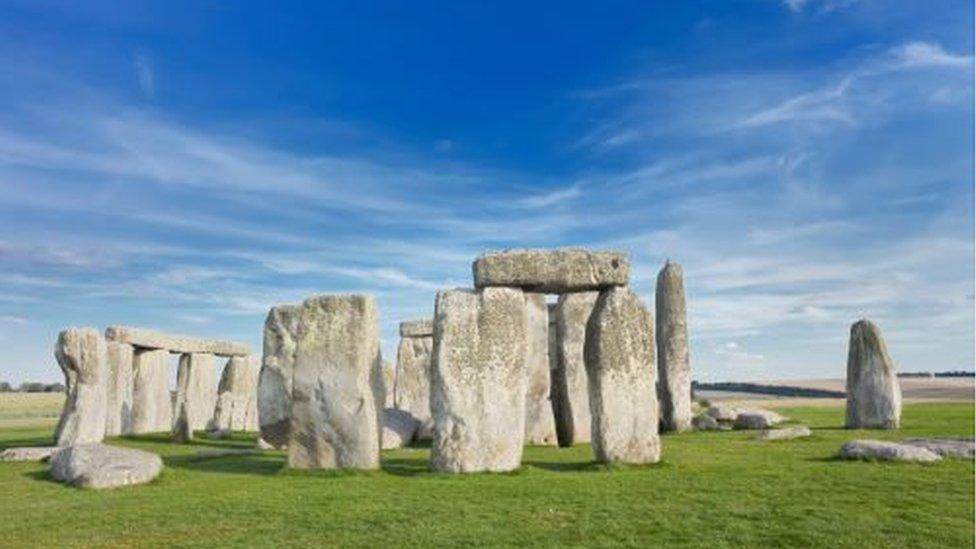Stonehenge: Preseli stone 'transported over land'
- Published

Stonehenge was erected more than 5,000 years ago
Stones from Pembrokeshire used in the construction of Stonehenge may have been transported by land rather than sea, archaeologists have found.
A study found some of the stones were taken from the northern part of quarries in the Preseli hills, making it easier to transport them over land.
The findings were published in the journal Antiquity, external.
Earlier research suggested the bluestones were taken south to the coast.
From here, they could either have been put on rafts or pulled between boats up the Bristol Channel towards Salisbury Plain.

The bluestones at Stonehenge were quarried in Wales
However, the new study of crops at Carn Goedog and Craig Rhos-y-felin found the stones were removed from further north in the Preseli hills - making it easier for ancient people to go over the hills rather than around them.
The quarries contained charcoal deposits dating back more than 5,000 years, to about 4000-3000 BC, approximately at the same time Stonehenge was put up.
Large standing stones there are of sarsen, a local sandstone, but the smaller ones, known as bluestones, come from the Preseli hills.
Radiocarbon dates
Joshua Pollard, a professor of archaeology at the University of Southampton, said the findings were key as they were "further confirmation that the Stonehenge bluestones were moved by people (and not geological forces such as ice-sheets) in prehistory, in what stands out as one of the most remarkable instances of long-distance movement of large stones in the ancient world."
He said that radiocarbon dates indicate there may have been a gap in time between the quarrying of the stones from Carn Goedog and Craig Rhos-y-felin, which may suggest they were "originally set up as one or more stone circles in Preseli."
Prof Pollard went on to explain the research revealed the "far-flung importance of the Preseli region during the Neolithic."
He added: "Ultimately, it's a story about people - about early farmers - with a strong connection to ancestral lands, and their need to reinforce those connections through the movement and building of great megalithic monuments."
- Published2 August 2018

- Published7 December 2015
